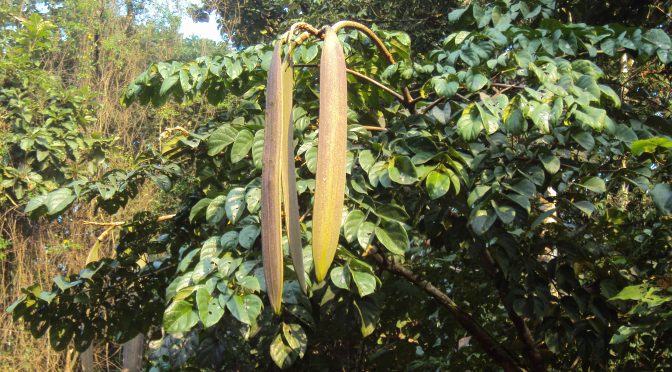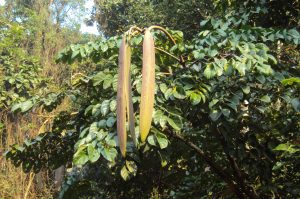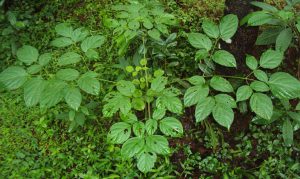| Class and Class No. | 3E ( 25 ) |
| Class No. | Siu Ho Leung |
| Year: | 2017-2018 |
Instruction: Type in useful information in the space provided.
| Chinese name: | 木蝴蝶 |
| Family Name (科名): | Bignoniaceae |
| Scientific name (學名): | Oroxylum indicum |
| Common name (俗名): | 千張紙 (植物名實圖考),破故紙、毛鴉船(四川),王蝴蝶(貴州),千層紙、土黃柏(廣西),兜鈴(滇南本草),海船(四川,思茅,西雙版納),朝筒(思茅),「棵黃價」(廣西壯族語),牛腳筒(海南)
|
| 習性:
喜光,喜溫暖濕潤氣候,稍耐寒。常生於山坡、溪邊、山谷及灌木叢中。
|
Growth habit:
Photophily plants, growing in warm and wet weather, cool property. Grow in hillsides, streams, valleys and bushes. |
| 葉:
葉對生,2-3回羽狀複葉,著生於莖的近頂端;小葉多數,卵形,全緣。
|
Leaf:
Leaves opposite, 2-3 pinnate shaped compound leaves, stems near the top. Most leaflets, oval and all green color. |
| 花:
花大,紫紅色,兩性。花萼肉質,鍾狀。
|
Flower:
Flower with big size and purple-red color, bisexual, thick scape, bell shape. |
| 果:
種子扁圓形,邊緣具白色透明的膜質翅。花期6-9月。 秋、冬二季採收成熟果實,曝晒至果實開裂,取出種子,晒乾。
|
Fruit:
Seeds oblate, margin with white transparent membranous, flowering from June to September. To harvest mature fruits in Autumn and Winter seasons, sun exposure to fruit cracking, remove the seeds and dried. |
| 性味功能
苦、甘,涼。歸肺、肝、胃經。
|
Properties
Taste bitter, cool and sweetness. To Lung Meridians, Liver Meridian and Stomach Meridian |
| 主治
種子:清肺利咽,疏肝和胃。用於肺熱咳嗽,喉痹,音啞,肝胃氣痛。
|
Treats
Seeds : For hyperactivity cough, throat paralysis, dumb, liver and stomach pain.
Bark : heat dampness, for infectious hepatitis and cystitis. |
| 知多一點點:
|
More to learn:
|
Previous Scientific Research (if any):
| 1. |
Useful Link:
| Topics | Hyperlinks |
| General information on Bignoniaceae | http://cht.a-hospital.com/w/%E6%9C%A8%E8%9D%B4%E8%9D%B6 |
| An overview of Bignoniaceae | https://www.sciencedirect.com/topics/agricultural-and-biological-sciences/bignoniaceae |
Questions:
| (Beginner) | Guidelines:
Answer can be directly harvested from the information given. e.g. Q1.What illness can Bignoniaceae help? Answer: …….. |
| (Elementary) | Guidelines:
Answer can be obtained from the information given and the external links. e.g. Q2.Where can I find Bignoniaceae? Answer: …….. |
| (Advanced) | Guidelines:
Question requires higher order thinking. More information should be found from external links or reference before answering the questions. Q3.Explain briefly how Bignoniaceae get its Chinese name? Answer: …….. |


